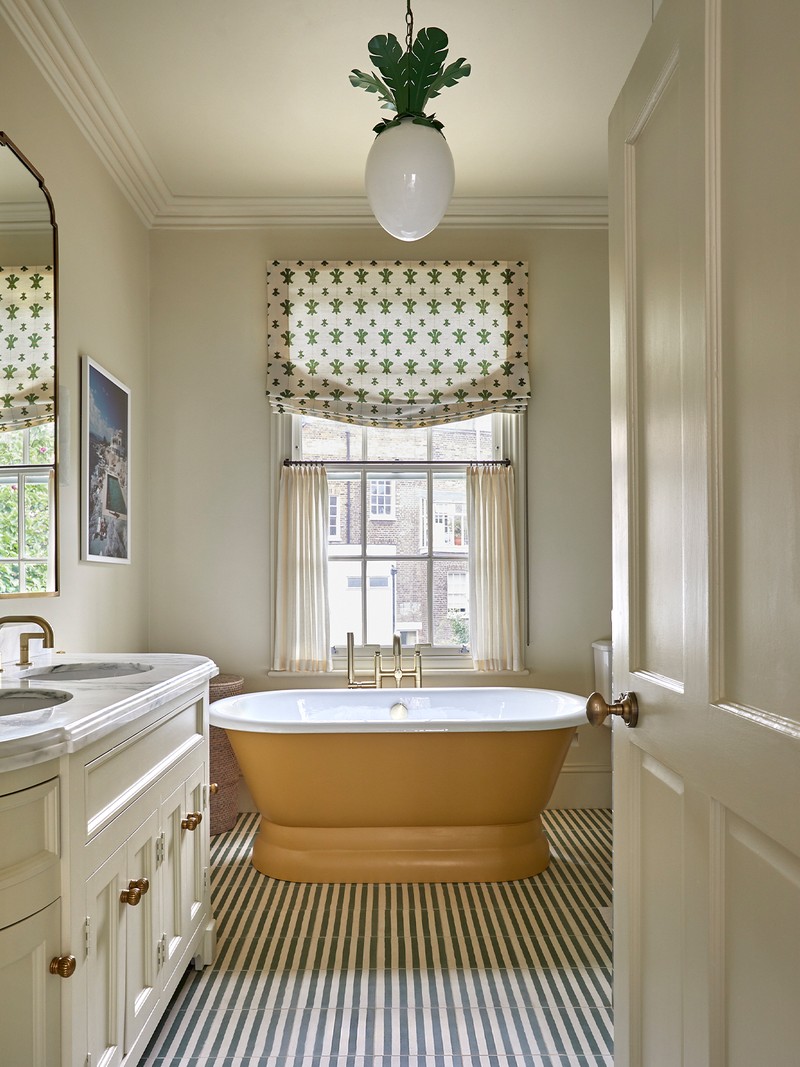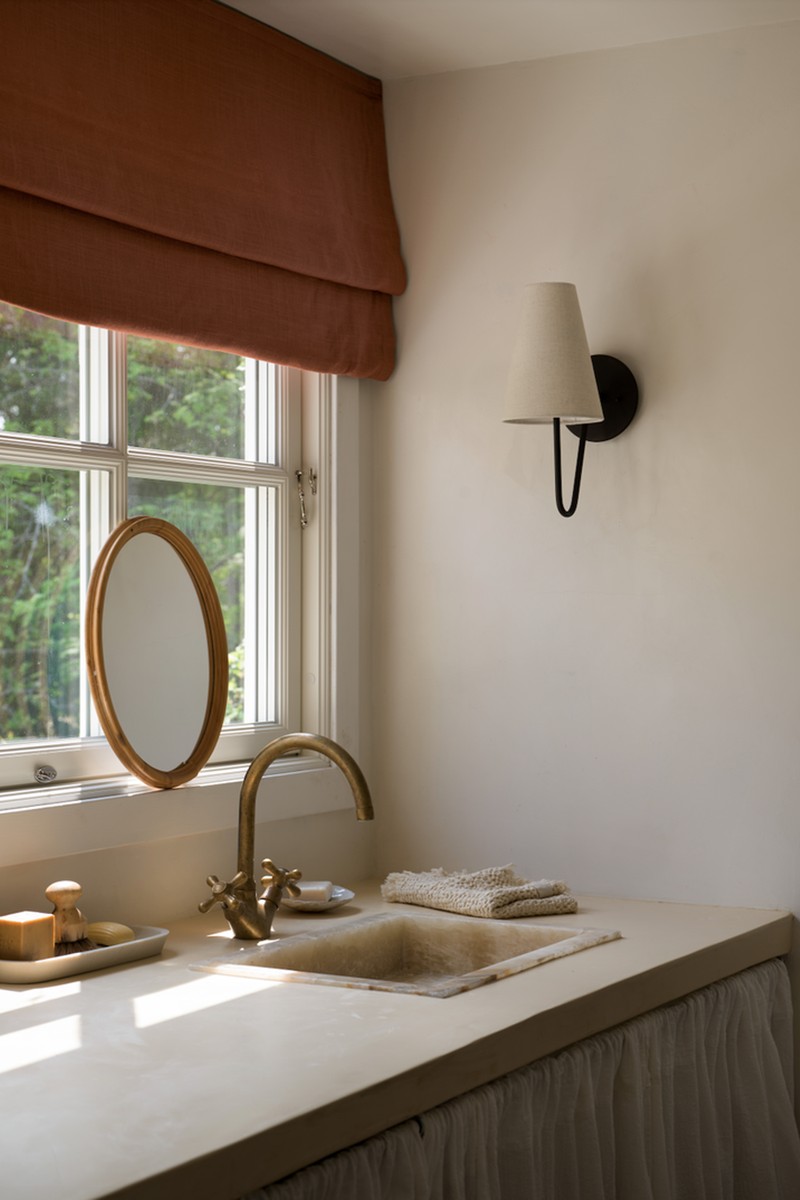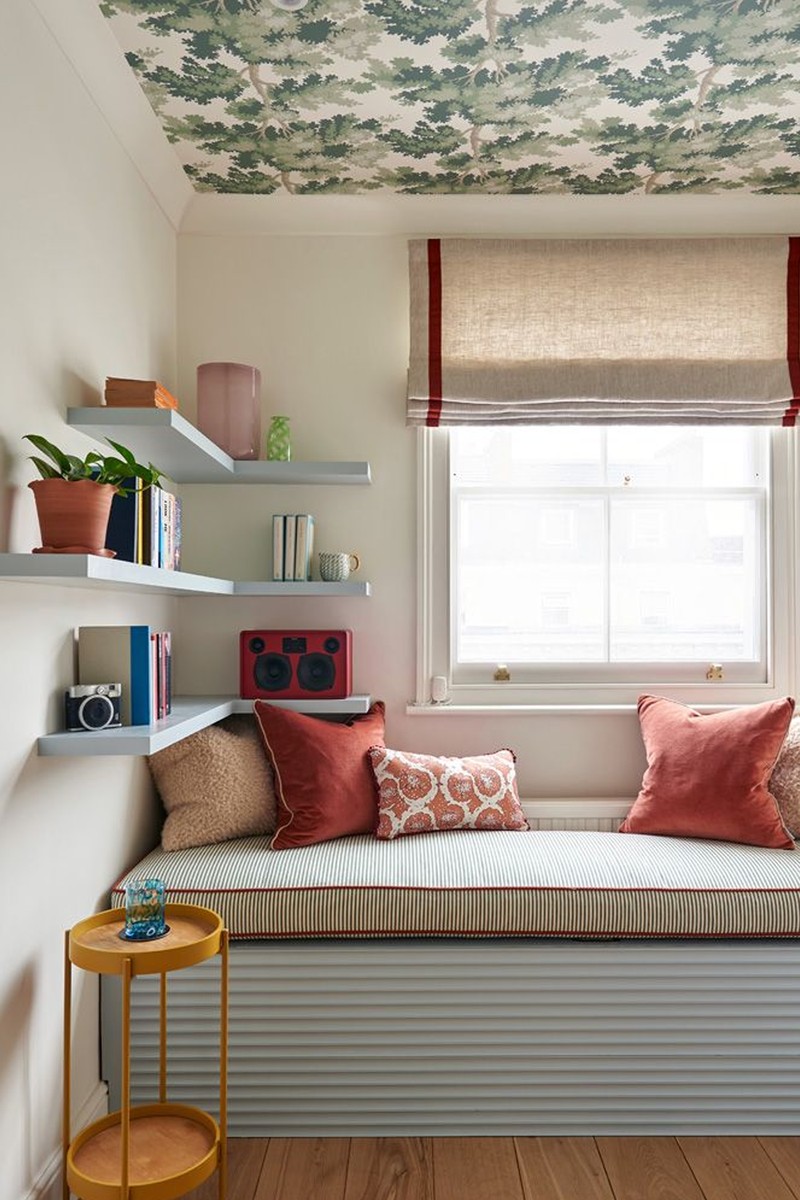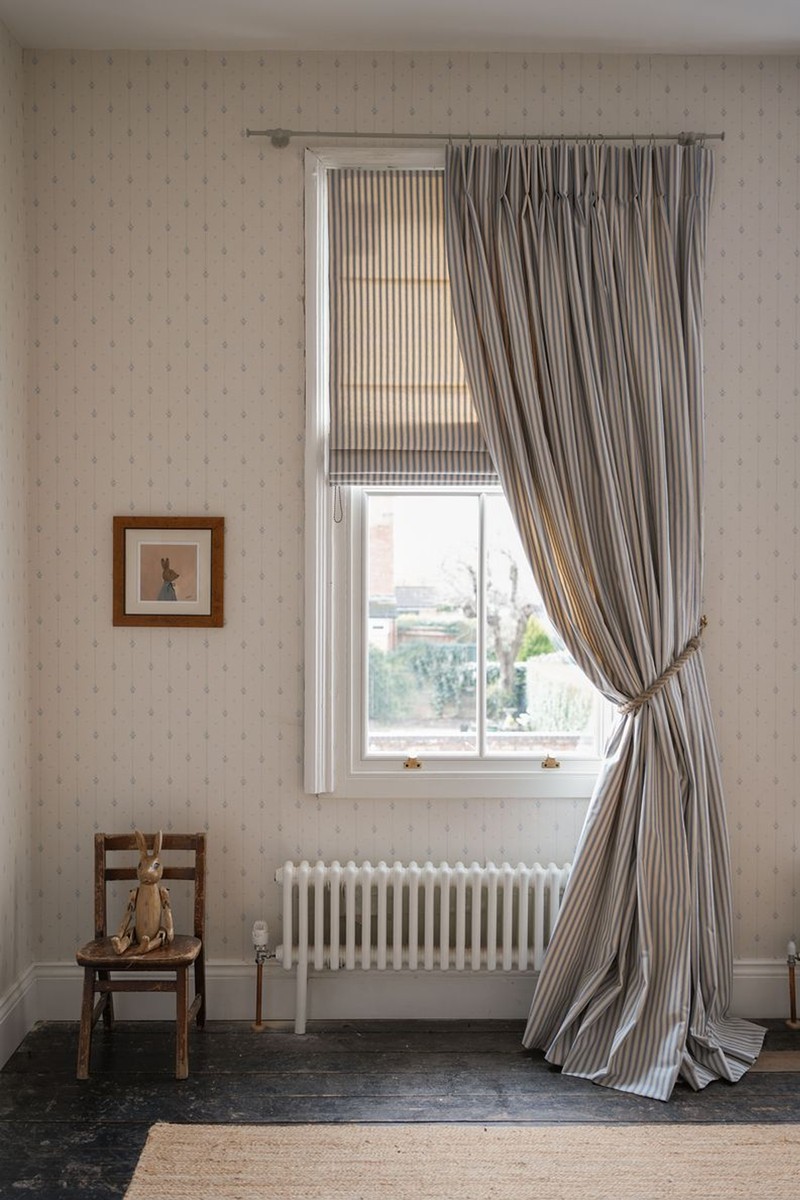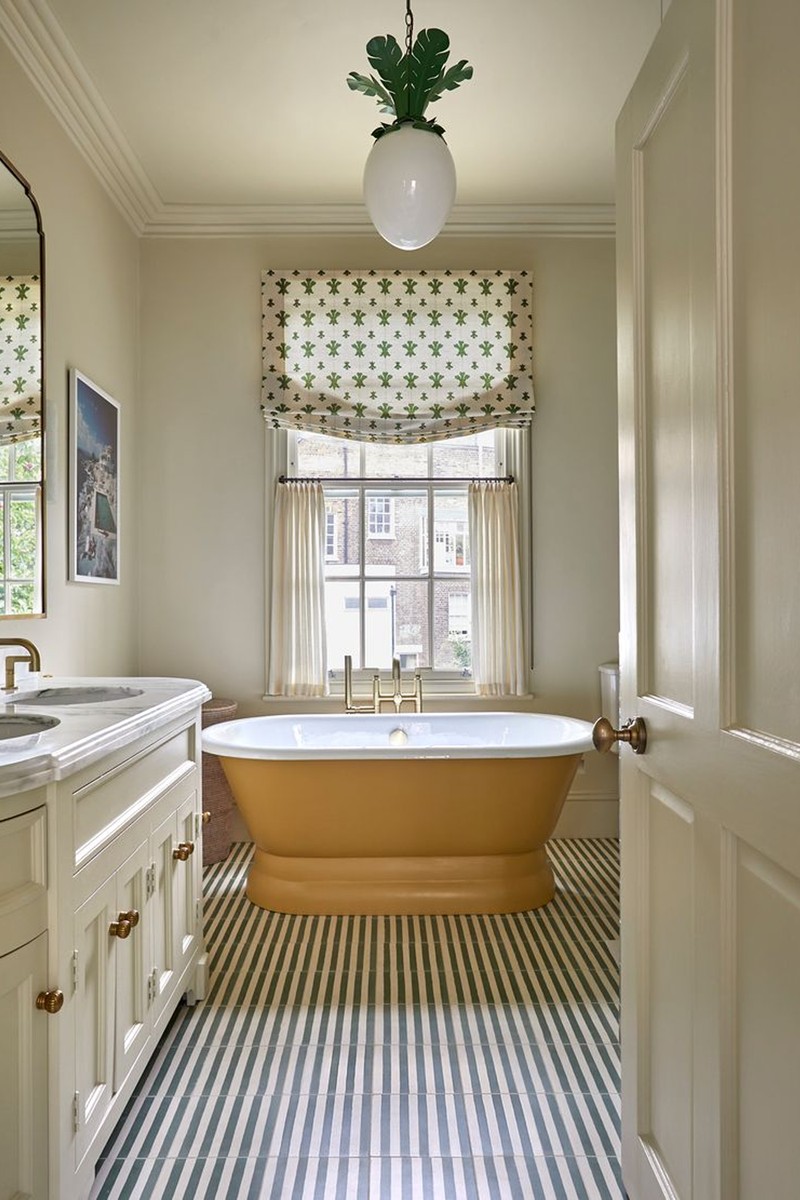Blinds 101: Practical Advice For Getting It Right
ON THE DIFFERENT TYPES OF BLINDS…
Roller Blinds
“Roller blinds are made from a single sheet of fabric that rolls around an aluminium tube at the top of the blind. They can be operated by a pull chain at the side or an electric upgrade that allows you to control the blinds via an app.
“They can be made from a wide variety of materials, including waterproof PVC, making them highly practical for rooms that are prone to humidity and moisture, such as bathrooms and kitchens. Most roller blinds are available with blackout lining.
“Depending on their lining, these blinds can be highly effective at blocking sunlight and retaining privacy, and roller blinds are especially suitable for wide window spaces like bay windows, as well as kitchens and bathrooms. The minimalist design also makes them a great option if you want to layer your blind with a curtain.” – Natasha Painter, director of marketing at Blinds2Go
Roman Blinds
“Roman Blinds are made from a luxurious fabric that gathers into neat folds when raised. They have four different lining options: unlined or sheer, light filtering, blackout, and thermal interlining. Blackout and thermal will help to insulate, whereas light filtering and sheer won't. They also use a pull chain, but electric options are also available.
“Blackout Roman blinds are very suitable for bedrooms – they’ll help you get a good night’s sleep and are also a great option for layering with curtains, as well as providing additional depth and character to your room. They are practical for letting light flood into your space when opened or blocking out the sun when closed. With a range of luxurious fabrics and patterns to choose from, including velvet and linen, and endless colours and patterns, they would make an elegant addition to any space in the home.” – Natasha
Pleated Blinds
“Pleated blinds are made from two sheets of lightweight fabric that are folded to create an accordion effect. Also known as honeycomb blinds – thanks to their beehive-like, hexagonal pockets – they’re the ultimate solution for helping you improve energy efficiency and light control in the home.
“They insulate rooms: a heat-reflective lining helps to keep rooms cool in summer and warm in winter. They also protect flooring and furniture against harsh UV rays to help prevent fading over time, especially in large window spaces that receive high sun exposure.” – Natasha
Skylight Blinds
“Also known as roof blinds, these are made to specifically fit roof windows based on the window manufacturer. Featuring an outside frame that holds the blind in place to prevent them from hanging down, they consist of a sheet of light filtering or blackout fabric that prevents harsh UV rays from entering a room when closed.
“Skylight windows are prone to heat escaping your room, especially when it’s cold outside, and vice versa in hot summer months. These blinds are designed for the specific purpose of fitting to skylight windows to help keep spaces warm in winter and cooler in summer by blocking and reflecting the sun’s rays, improving insulation all year round.” – Natasha
ON THE PURPOSE…
The Best Blinds For Privacy
“Roller blinds can fit snugly within window recesses, providing decent privacy given their lack of gaps or slats when fully lowered. Additionally, roller blinds often come with options for blackout fabrics or PVC materials, further enhancing their ability to block out light and maintain privacy.
“Roman blinds are a more luxurious option and those with a blackout lining ensure minimal light penetration and offer a barrier against any overlooking neighbours, making them ideal for bedrooms and living rooms where privacy is paramount. The discreet pull chain or cord mechanism allows for precise control over the height of the blind, enabling you to adjust the level of privacy.
“Pleated blinds create a barrier against external view when fully lowered. The pleated fabric, combined with the option for light-filtering or blackout materials, offers versatility in controlling privacy levels, making them well suited for conservatories and kitchens, where varying degrees of privacy are wanted throughout the day.” – Natasha
The Best Blinds For Light Control
“When it comes to controlling light, each type of blind offers varying options. Roman blinds provide effective light control by minimising light penetration and creating a barrier against external visibility as they’re made from one continuous piece of fabric.
“Pleated blinds are available in light-filtering or blackout materials. By adjusting the position of their pleats, you can adjust the amount of light that enters the room throughout the day, which is suitable for spaces like conservatories and kitchens, where varying degrees of light are required depending on the time of day.” – Natasha
Blackout Blinds
“Not every type of blind can be made into a blackout blind. Blackout blinds specifically refer to blinds that are designed with an opaque lining or fabric to block out external light from entering a room.
“The most common types of blinds that can be made blackout are roller, Roman and pleated. Sheer blinds are not typically made into blackout versions since the purpose of their sheer fabric design is to allow some light to filter through. While they can provide privacy, they don't fully block out light like dedicated blackout blinds.” – Natasha
Energy Efficient Blinds
“There are a range of energy-efficient blind styles that offer insulation. Pleated blinds are specifically designed with this in mind. Their cellular honeycomb structure creates pockets of trapped air that act as an insulating barrier, helping to keep heat inside during winter and blocking outdoor heat in summer.
“Blackout blinds or blinds with thermal interlining help to control the temperature of the home, keeping your space cosy in winter and cool in summer, plus they let a gentle amount of light filter through.” – Natasha
ON INSTALLATION & MAINTENANCE…
Installing Your Own Blind
“You can install your own blind with the help of some basic tools like a drill with hammer settings, screwdrivers, masking tape, a hammer and a spirit level. The main decision you will have to make is whether to install the blinds inside the window recess or have an exact/outside fit. Proper measuring is crucial – use a metal tape measure and account for any obstructions around the window area. You can get several ‘no drill’ blind options that are designed for easy, tool-free installation. Some can click in to fit the recess, and we have roller blinds that can be twisted in the recess.” – Natasha
Maintaining A Blind
“The best way to maintain blinds depends on the style of blind you’ve chosen and the material it’s made from. As a general rule, regularly dusting or vacuuming blinds is the best way to prevent the build-up of dirt and allergens for most fabrics. Use the brush attachment on your vacuum to gently clean the slats or fabric. For more delicate fabrics like silk and velvet, check out product-specific cleaning recommendations to ensure your blind doesn’t get damaged.
“For spills or stains, spot clean with a damp cloth and mild detergent solution. Avoid harsh chemicals that could damage the blind material. Like with dusting, the best way to remove stains does vary depending on the fabric of the blinds.
“Operate blinds properly when raising and lowering to prevent excessive wear and tear or damage to mechanisms. Never yank the cords to your blinds. For cordless or motorised blinds, follow manufacturer instructions for battery replacement or resetting if needed.” – Natasha
New Technologies
“There’s currently a whole host of new technology redefining the blinds industry, bringing increased convenience and functionality to users. Advancements such as the SmartView app for electric blinds give users control over their window coverings for seamless adjustment at the touch of a button, operated while at home or remotely via smartphone.
“Solutions like No Drill have been designed to eliminate the need for traditional fittings and fixings, ensuring easy installation. All that is required is a simple twist of a discreet tightening wheel to lock the no-drill blinds securely in place – no tools required.” – Natasha
The Trends To Know
“There's a growing desire for a more relaxed look. Relaxed blinds tick all the boxes, offering a softer look with a curved bottom. Practical but a little prettier than a classic Roman, they can be made in most fabrics but suit lighter, unlined linens for a rustic look or sheer fabrics for a slightly ethereal feel, particularly in a bedroom or bathroom.
“Remember the reverse of a blind is another opportunity to get creative. A lot of our customers line their blinds in a simple ticking or stripe so, when the blinds are down, they look as beautiful from the outside of the house as they do on the inside. Particularly if on street level, they’re another extension of personality to the look of your home.
“Alongside relaxed blinds, matching café curtains are in demand right now. Pairing the two looks chic and elegant, and they do a wonderful job of creating privacy and intimacy, while adding texture and warmth to any room.” – Tori Murphy, textile designer
Visit Blinds-2Go.co.uk & ToriMurphy.com
DISCLAIMER: We endeavour to always credit the correct original source of every image we use. If you think a credit may be incorrect, please contact us at info@sheerluxe.com.
